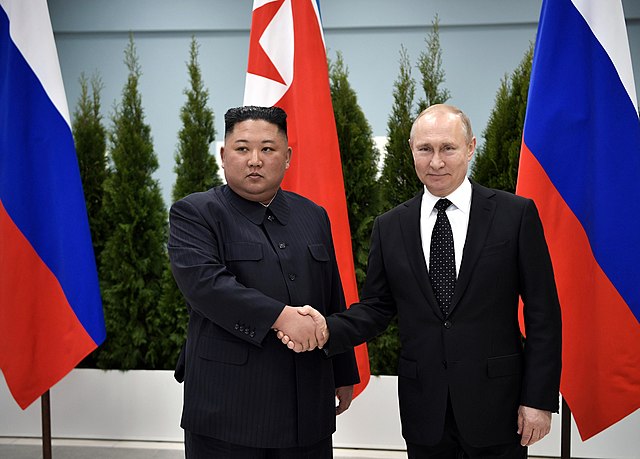North Korea's missile program continues to be a concern for regional security, with the regime openly threatening several countries, including South Korea and Japan.
North Korea on Friday bragged of its recently tested new intercontinental ballistic missile (ICBM), calling it "the world's strongest," a claim viewed by outside experts as propaganda though the test showed an advancement in the North's quest to build a more reliable weapons arsenal.
The missile, launched by North Korea on Thursday, flew higher and longer than any other weapon the country had fired so far. It signaled that the North has achieved progress in acquiring a nuclear-armed ICBM that can hit the U.S. mainland. But foreign experts assess that the country has still a few remaining technological issues to master before acquiring such a functioning ICBM.
In response to the launch, foreign ministers from South Korea, the U.S., and Japan condemned the action as a violation of U.N. resolutions and reiterated their commitment to thwarting North Korea's funding of its weapons programs.
On Friday, the North's Korean Central News Agency (KCNA) identified the missile as the "Hwasong-19" ICBM and called it "the world's strongest strategic missile" and "the perfected weapon system."
KCNA said Kim Jong Un observed the launch, describing it as "an appropriate military action" to express North Korea's resolve to respond to its enemies' moves that escalated tensions and threats to North Korea's national security. It said Kim thanked weapons scientists for demonstrating North Korea's "matchless strategic nuclear attack capability."
South Korea's Foreign Ministry announced unilateral measures against 11 North Korean individuals and four organizations linked to procuring missile components, although such sanctions are largely symbolic given the long-standing financial isolation of the North.
Both South Korea and Japan are not nuclear-armed. They are under the protection of U.S. extended deterrence, also known as the nuclear umbrella, Washington's commitment to deter and respond to nuclear and non-nuclear scenarios in defense of Seoul and Tokyo.
In an effort to create some level of deterrence, a U.S. Air Force B-1B bomber, also known as the Lancer, was sent from its home station at Ellsworth Air Force Base in South Dakota to airspace east of the South Korean island of Jeju, which is south of the Korean Peninsula and west of Japan's main island of Kyushu.
In October, North Korea deployed a contingent of troops to Russia in support of Russia's war in Ukraine --the latest development in intensified cooperation between the two countries since Russia's full-scale invasion of Ukraine in February 2022, as noted by the Institute for the Study of War.
The Kremlin is likely to leverage North Korean manpower to support its ongoing offensive efforts and offset requirements of Russia's domestic force generation capacity. The impacts of the deployment of North Korean troops into the Ukrainian theater of operations extend far beyond the battlefield in Ukraine, however.
Pyongyang likely hopes that North Korean military personnel will gain combat experience in the conditions of contemporary war -- experience that it may hope to apply to future conflicts it may fight.
The alignment between North Korea and Russia poses the distinct possibility of threatening the long-term stability of the Korean Peninsula and the broader Asia-Pacific region.
North Korea's support for Russia in the Ukraine conflict is rooted in several strategic interests.
Primarily, North Korea sees an opportunity to gain access to advanced military technology and critical resources. In exchange for supplying Russia with weapons and ammunition, North Korea is looking to receive essential items such as food, fuel, and possibly assistance with its missile and satellite programs, helping it overcome technological barriers.
(Note: You can view every article as one long page if you sign up as an Advocate Member, or higher).





